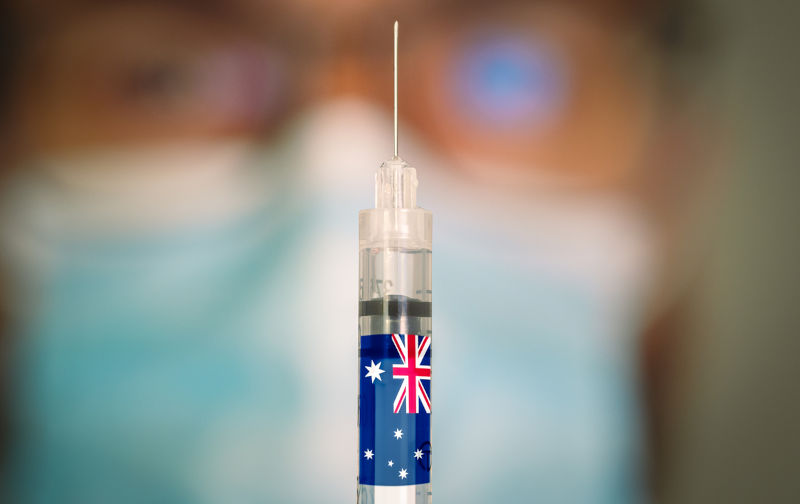Australia isnt giving everyone a fair shot
November 27, 2023
Giving all adults the chance to get vaccinated should be easy. Vaccines slash the risk of severe illness. They are very safe for people who are recommended to get them. Best of all, compared to other ways to improve our health, vaccination is quick, cheap, and easy.
It doesnt require costly equipment, or a medical specialist with a decade of training. At most it might be needed once or twice a year, not every day like many medicines. For most people its easier than changing your eating, drinking, or exercise habits to get healthier.
Yet adult vaccination in Australia is far too low.
COVID infections have surged and it is a leading cause of death. But only about a quarter of Australians aged over 75 have been vaccinated in the past six months, and less than four in 10 people in residential aged care.
Its not just COVID. People in their 70s are recommended to get vaccines for shingles and pneumococcal disease. But only half have had a shingles vaccine, and just one in five are vaccinated for pneumococcal disease.
The stark differences in who gets a shot are even more troubling.
Among people recommended to get COVID vaccines, those who dont speak English at home are almost half as likely to have been vaccinated in the past six months. If they arent proficient in English, they are 58 per cent less likely to be up to date. Indigenous people are one third less likely to have had a recent vaccination.
People living in rural and remote areas are more likely to miss out, and there are even big differences within every capital city. Heading into winter this year, about half of older people in North Sydney and Mosman had been vaccinated in the previous six months. But in Fairfield in western Sydney, the rate was just 17 per cent.
The groups not getting vaccinated are the same ones that need vaccination the most. People facing disadvantage are often more likely to be exposed to infectious diseases, and at higher risk of severe illness if they catch one.
Vaccination fatigue has set in, trust in vaccination has been shaken by misinformation, and the gaps in vaccination between different groups have grown. But there is some good news: we know what works, and many of the foundations for a fairer system are in place.
Child vaccination surged after targets were set in the late- 1990s, setting an example to follow. And the pandemic has left us with important lessons and investments. Many programs designed and delivered with local communities worked, increasing low vaccination rates. Pharmacy vaccination took off, and the federal government has made a big investment to expand it.
Now its time for the federal and state governments to build on these foundations and lead an adult vaccination reset.
The first step is for governments to set adult vaccination targets. Like child vaccination targets, they should include overall targets and ones for communities that are being left behind.
Governments should make vaccinations easier to get, and easier to understand. Vaccination surges should mobilise the community, with government advertising explaining vaccination, and SMS reminders for high-risk people.
But on top of these universal measures, targeted policies are needed to reach groups that miss out.
Primary healthcare providers should get more support to meet the needs of low-vaccination groups. About 95 per cent of older Australians already go to the GP at least once a year, and many regularly visit the pharmacy.
Primary Health Networks should support GP clinics and pharmacies to educate and encourage the groups that arent getting vaccinated, provide translation where needed, and make sure care is safe and welcoming for people from different backgrounds.
But that will still leave some people who arent willing or able to use these services, perhaps because of poverty, or deeply distrust in the health system. For these groups, tailored, local initiatives can work.
Examples from the pandemic are supporting trusted community champions who promote vaccination within their communities, and pop-up vaccination services in community settings, with tailored information to respond to local concerns.
Funding for these programs is drying up. It should be ongoing, because the problem of some hard-to-reach communities missing out hasnt gone away if anything its getting worse.
Vaccination rates are a window onto a health system that isnt working for everyone. There are huge gaps in access, exposure to health risks, and life expectancy across Australias geographic, economic, and cultural divides.
Healthcare usually puts the onus on the individual to know what they need and turn up. Too often it treats everyone the same, regardless of their needs. By identifying who is missing out, setting targets for equal access, and focusing support where its needed most, that could change, creating a template for a fairer health system and a fairer Australia.
For more on this topic, P&I recommends:
https://grattan.edu.au/report/a-fair-shot-ensuring-all-australians-can-get-the-vaccines-they-need/
